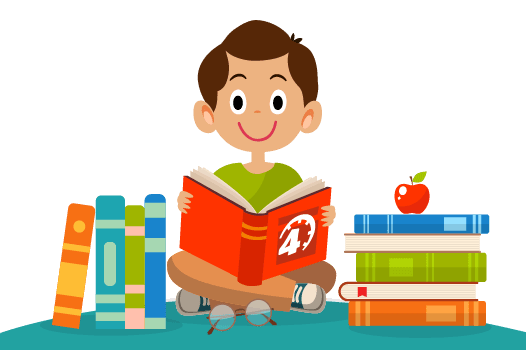Beginning with the end in mind will help you set expectations, measure progress, and create opportunities to celebrate the success of your child. While some subjects (i.e. math) may have more concrete indicators of progress, areas like reading may not. Creating goals for specific components of reading will help guide your instruction and allow you to document your child’s accomplishments. Here are some tips for how to set effective reading goals for students.
SMART Goals
SMART goals have criteria that make them effective:
- S: Specific
- M: Measurable
- A: Achievable/Attainable
- R: Relevant/Realistic
- T: Time Bound (Remember that a goal without a deadline is a dream!)
Goals can be written in the following format in order to make sure they have all the criteria:
- By (date), and given (materials, support), my child will be able to (action) with (degree of accuracy).
For example, if your child needs a target to develop reading comprehension skills, a reading goal for your student might look something like this:
- By the end of June, and given a grade-level nonfiction text, my child will be able to answer multiple choice reading comprehension questions with at least 9 out of 10 correct.
Use Benchmarks and Subtasks to Stay Motivated
Remember that once you create a goal for the year, you can break down the long-term goals into shorter-term goals called benchmarks. Instead of increasing the number or percent correct, you can also build your benchmarks on other factors. For example, you can increase the grade level of the text or decrease the level of support provided when reading the text. You can increase the number of words read per minute or decrease the number of errors.
Using the overall goal above, and based on where your child is at the beginning of the year, your benchmarks might be something like this:
- By mid-November, my child will be able to use context clues and other strategies to determine the meaning of unknown words and the point of view.
- By the end of January, and given a grade-level nonfiction text, my child will be able to recall the main idea and the details that support it 70% of the time
- By mid-April, my child will be able to verbally summarize paragraphs and chapters accurately 4 out of 5 trials
If you are focusing on a more complicated task, you can break down the task into parts/subtasks and set a benchmark for each. Basically, you want to create goals and benchmarks that you can measure at each endpoint to gauge your child’s progress.
Reading Components
Rather than targeting reading “in general,” set good reading goals for students that are specific enough to provide you with strategies towards helping struggling readers. The National Reading Panel released a report documenting five essential components to reading, known as the “Big 5”:
- Phonemic Awareness—understanding that spoken words are made up of individual sounds (called “phonemes”)
- Phonics—understanding that the sounds in speech relate to letters
- Fluency—ability to read with speed and accuracy
- Vocabulary—understanding of individual word meanings
- Reading Comprehension—ability to get meaning from text
Phonemic Awareness and Phonics are often areas where good reading goals for students are needed for very young or developing readers. Fluency and reading comprehension are more relevant for older or more experienced readers. Vocabulary development can begin at any age and continue throughout the lifespan. You can use these goals to create specific strategies for improving your child’s reading skills, which can lead to an increase in reading scores.
Example SMART Reading Goals
Let’s look at some examples of reading goals within each of the “Big 5” components:
- Phonemic Awareness: By the end of June, and given one-syllable spoken words, my child will be able to break down each word into its sounds/phonemes, with at least 8 out of 10 correct.
- Phonics: By the end of June, and given cards showing upper-case and lower-case letters, my child will be able to name the letter and its sound with 100% accuracy for all letters of the alphabet.
- Reading Fluency: By the end of June, and given a grade-level fiction text, my child will be able to read aloud at 25 words per minute with no more than 5 decoding errors.
- Vocabulary: By the end of June, and given a list of 20 grade-level vocabulary words, my child will be able to pick the definition of the words from four options with at least 70% correct.
- Reading Comprehension: By the end of June, and given a grade-level nonfiction text, my child will be able to answer multiple choice reading comprehension questions with at least 9 out of 10 correct.
Set your homeschool up for success with these goal-setting tips!








